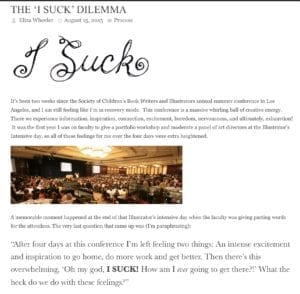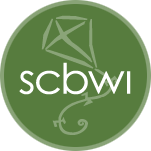My SCBWI LA National Conference Keynote
Last month I attended the Society of Children’s Book Writers and Illustrators summer conference in Los Angeles, and was invited there by Lin Oliver to give my first keynote speech for one of their national conferences. It was an incredible honor to be invited, and it marked a big milestone for me as an SCBWI member (and also as an introvert).
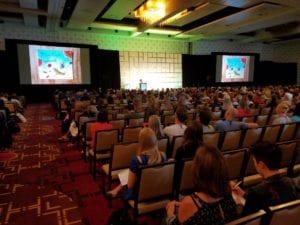 I recall years of sitting in the audience at these conferences and while listening to keynotes thinking, “I could NEVER do that!”
I recall years of sitting in the audience at these conferences and while listening to keynotes thinking, “I could NEVER do that!”
Haha! says The Universe.
What I didn’t know then was that, by now, I would have something to say and something to be excited to share from my experiences over the past 5 years of working full-time as a children’s book artist.
For my presentation, I was able to share about my experience of getting published quickly, and that the difficulties and the learning curve started, for me, after I’d published my first picture book, MISS MAPLE’S SEEDS. In the early days, I approached creative work as though it was a straight line from idea to final painting, and my process was built around a search for the quickest way from point A to point B. I spent years struggling in my approach to the work, focusing on productivity and the end goal, and found that instead of enjoying creating this beautiful work for books that were a dream to be hired for, I was finding myself chronically stressed and creatively burnt out.
Creativity is not a straight line.
With each book I worked on, I learned new things about working as an artist, and found that
#1. Creativity does not work like a straight line. My focus on productivity and getting to the end product as efficiently as possible was the nail on my creative coffin. So…
#2. In order to enjoy the work, I had to focus not on the end product, but on the process of creating the work itself.
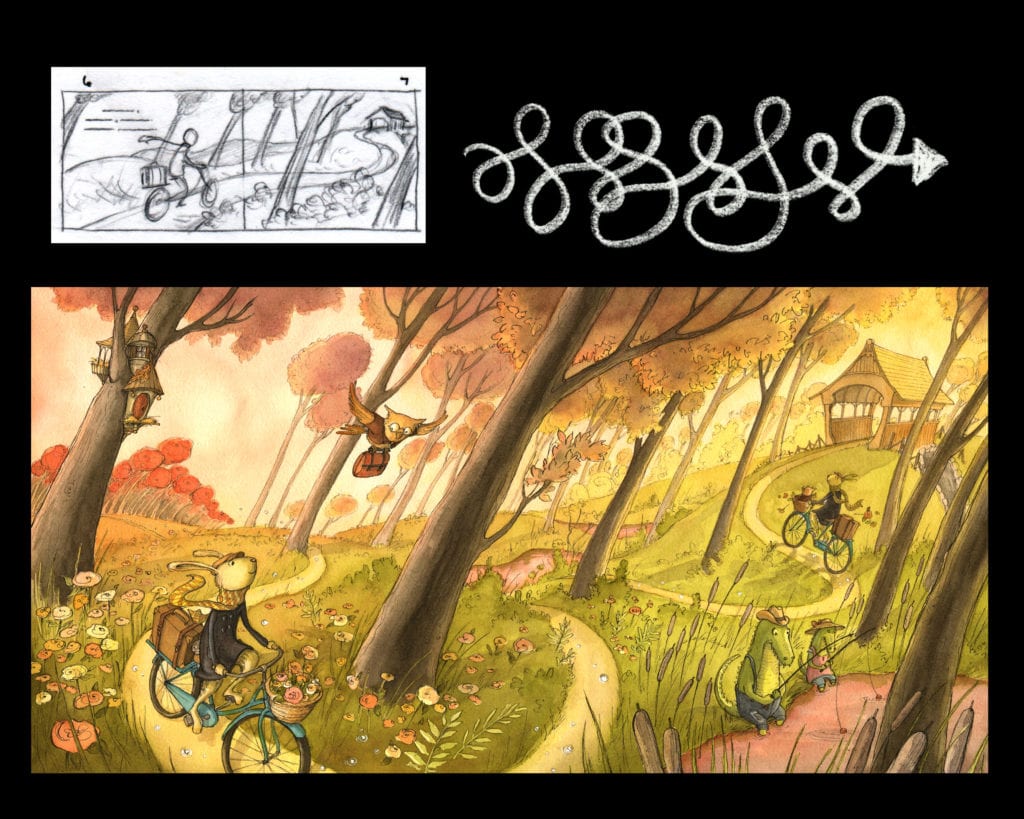
By shifting my focus onto the creative process, and how to make that daily process more enjoyable, I found stages of the work where I encountered resistance on a regular basis. This can be summed up best by this blogpost I wrote from a few years ago, which is a creative condition I call “THE ‘I SUCK’ DILEMMA”.
There are lengths of time—days, months, years—where the work we’re doing doesn’t look good, and it’s during this time that we experience the most resistance to doing the work. Not only do we not need to resist sucky work, but we can use it and embrace it as an important (and fun!) part of the process of getting to the better stuff.
I’ve been spending the past few years evolving my own creative process, and also reading about how the body, brain, and creative mind work together. This led me to break down a creative process for myself into 7 1/2 Stages, each that have a unique mindset and important function in our work as writers and artists. These phases don’t need to happen in order, and we move organically around them:
1. DIG for ideas inspired by your childhood interests and your current interests. Ponder them, journal about them.
2. INSPIRE with reference photos, inspiration from other artists, research and information. Study the work of your heroes.
3. COLLAGE together quick thumbnails, studies, sketches, pieces, color swatches, paint tests, lists. This is about quantity over quality. Move quickly, and don’t judge, edit, or analyze. Think later.
4. SIMMER: Let it rest. Put it away. Go do other things and let your brain make connections on it’s own.
5. IGNITE: Moments of insight, clarity, inspiration often come at times when we’re not actively in the work…be ready at all times to capture these ideas.
6. REFINE the work. Bring your thoughtful, discerning, honing eye. Here’s where you can think and edit. Pull the pieces together. This is about quality over quantity.
7. ASSESS: Step back and look. Share it with people and get feedback. Go to your critique group or an honest friend.
½ step: CHECK in constantly, while in the midst of each stage, to see if you are pushing, straining, angsty, or feeling bored. If you aren’t flowing, then you may be in the wrong phase and probably need to go back to inspiring, collaging, or simmering.
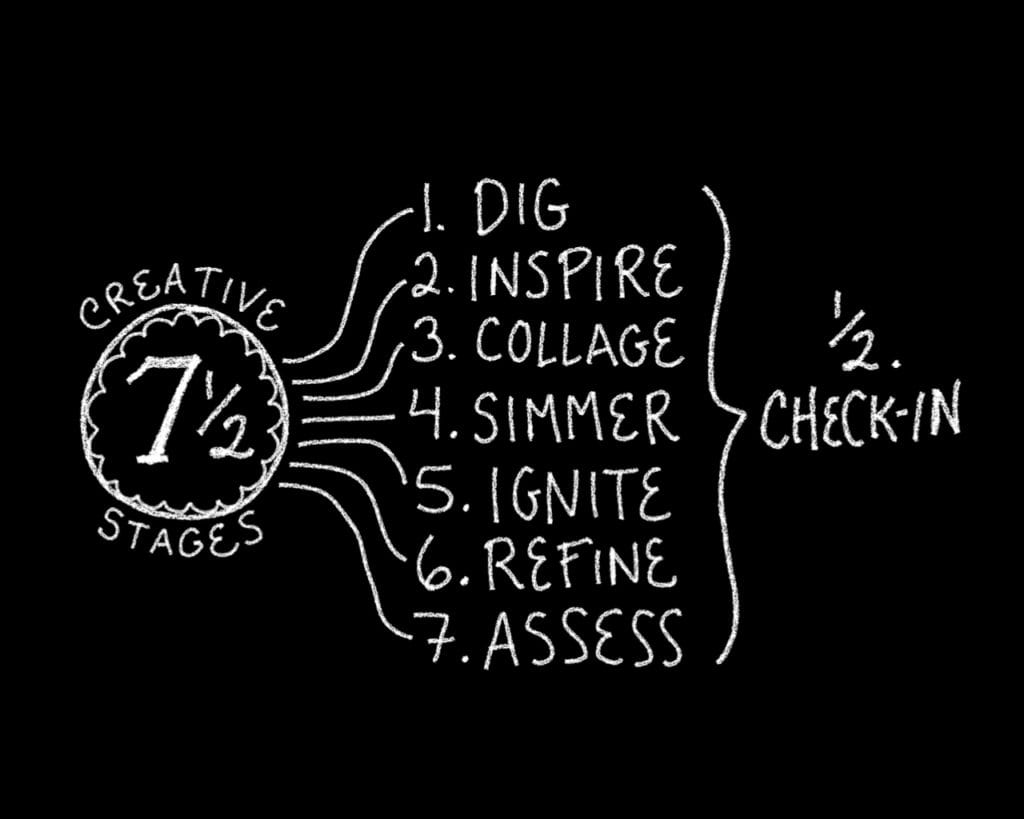
After my presentation was over, it was awesome to hear feedback from so many writers and illustrators about what resonated with them.
For those who weren’t there, I’ll share more about my 7 1/2 steps in more detail in an upcoming post.
I also talked about our creative brain, and shared some really fascinating science that explains how we get ideas, which I’ll also share more about in another post as well.
Stay tuned!
To share a few other personal highlights from the conference:
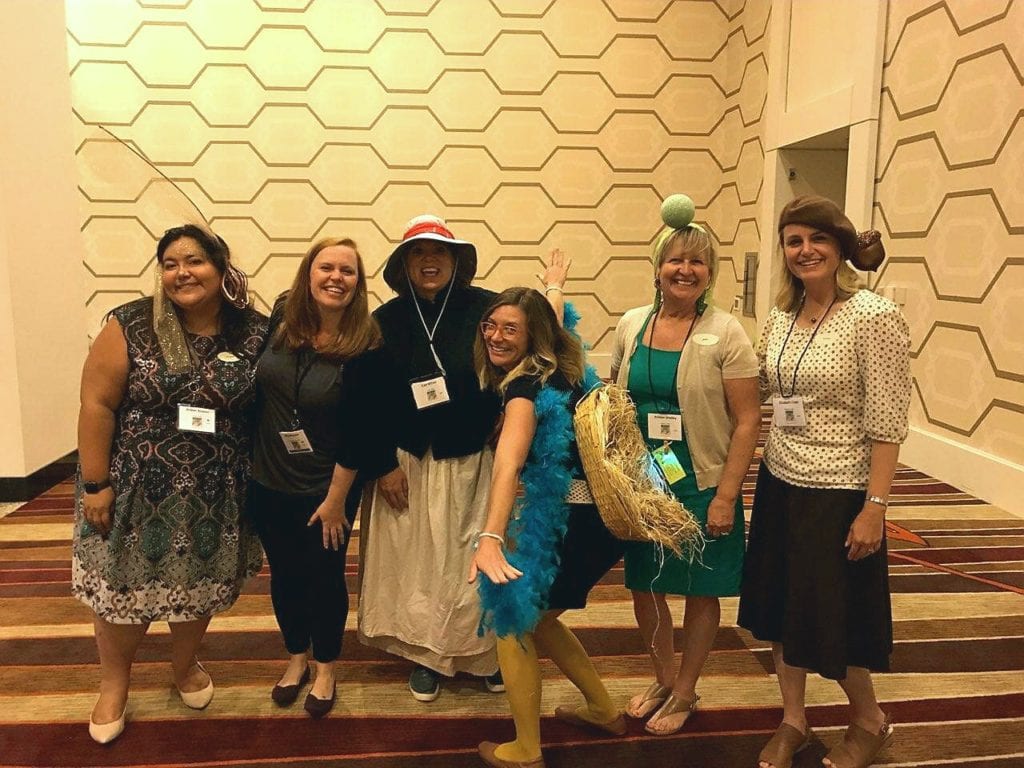
This kidlit group from Utah came dressed as Miss Maple and her seeds! Ahhhhhh!!! ♥♥♥ Amber Alvarez as maple seed, Cari M Lee as Miss Maple, Heidi M Rogers as bluebird, Kristen Shelley as a pea, Elizabeth Child as the acorn
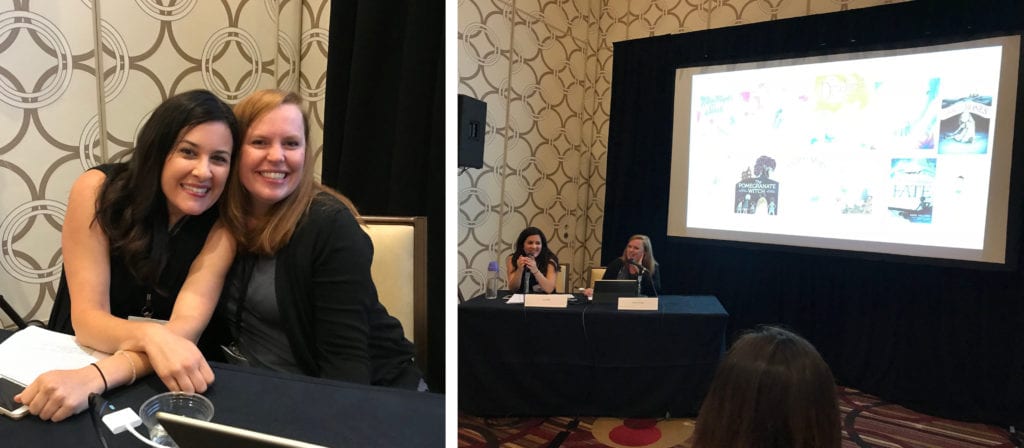
Doing a breakout session for illustrators with my agent, Jen Rofe. (Photo by Debbie Ridpath Ohi; debbieohi.com)
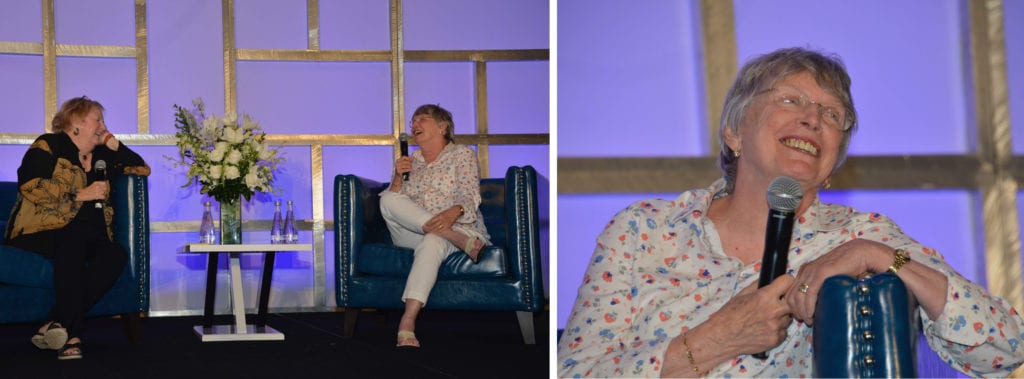
Hearing the legendary author Lois Lowry share stories about writing and her books (Photos by Alan Baker)
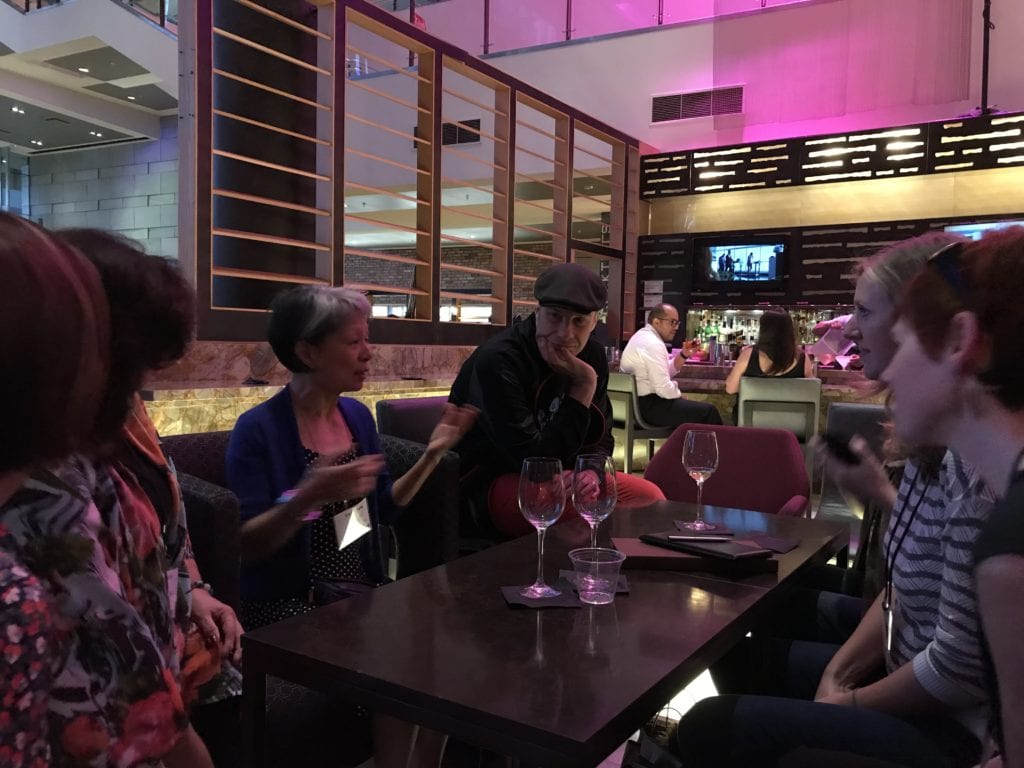
Gathering with art director, Cecilia Yung, and several of her illustrator clients for drinks and sharing
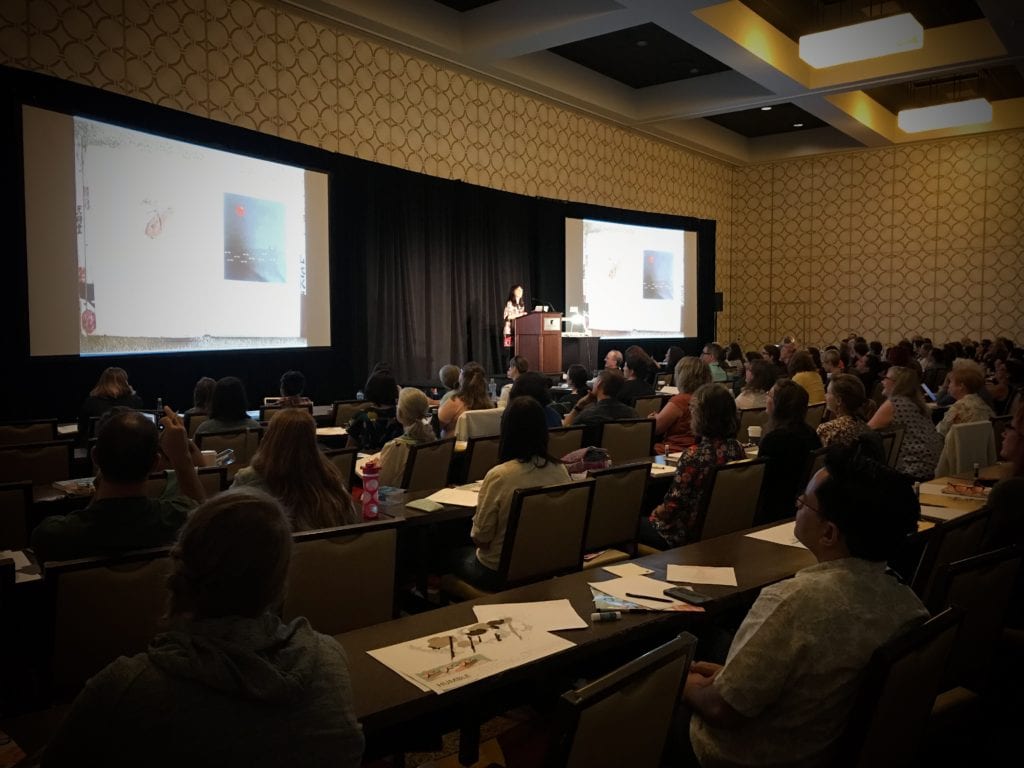
Watching Debbie Ohi give a presenation at the Illustrator’s Intensive
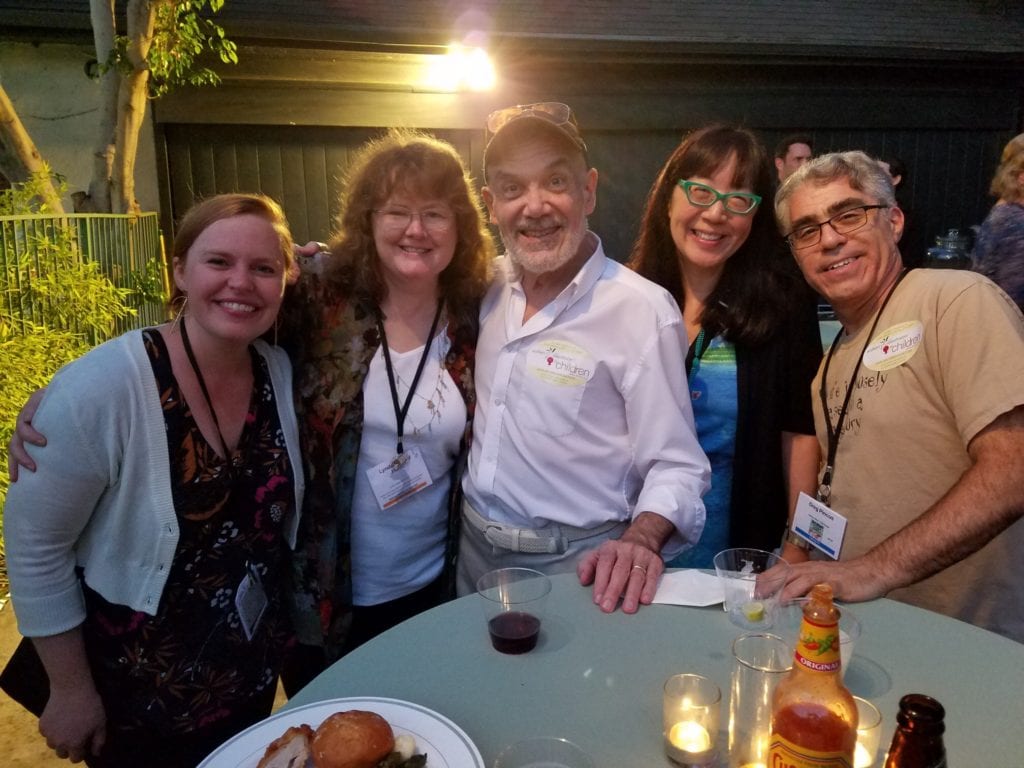
Visiting with fellow faculty Lynda Mulally Hunt, Bruce Coville, Debbie Ridpath Ohi, and Greg Pincus at Lin Oliver’s staff party
All of my love and thanks to Lin Oliver, Steve Mooser, and the SCBWI for everything they’ve done to build this amazing community, and for all the opportunities they give their members, myself included. Of the hundreds of people who have asked me “How do I start out in children’s books?” my answer is always the same…join SCBWI.

